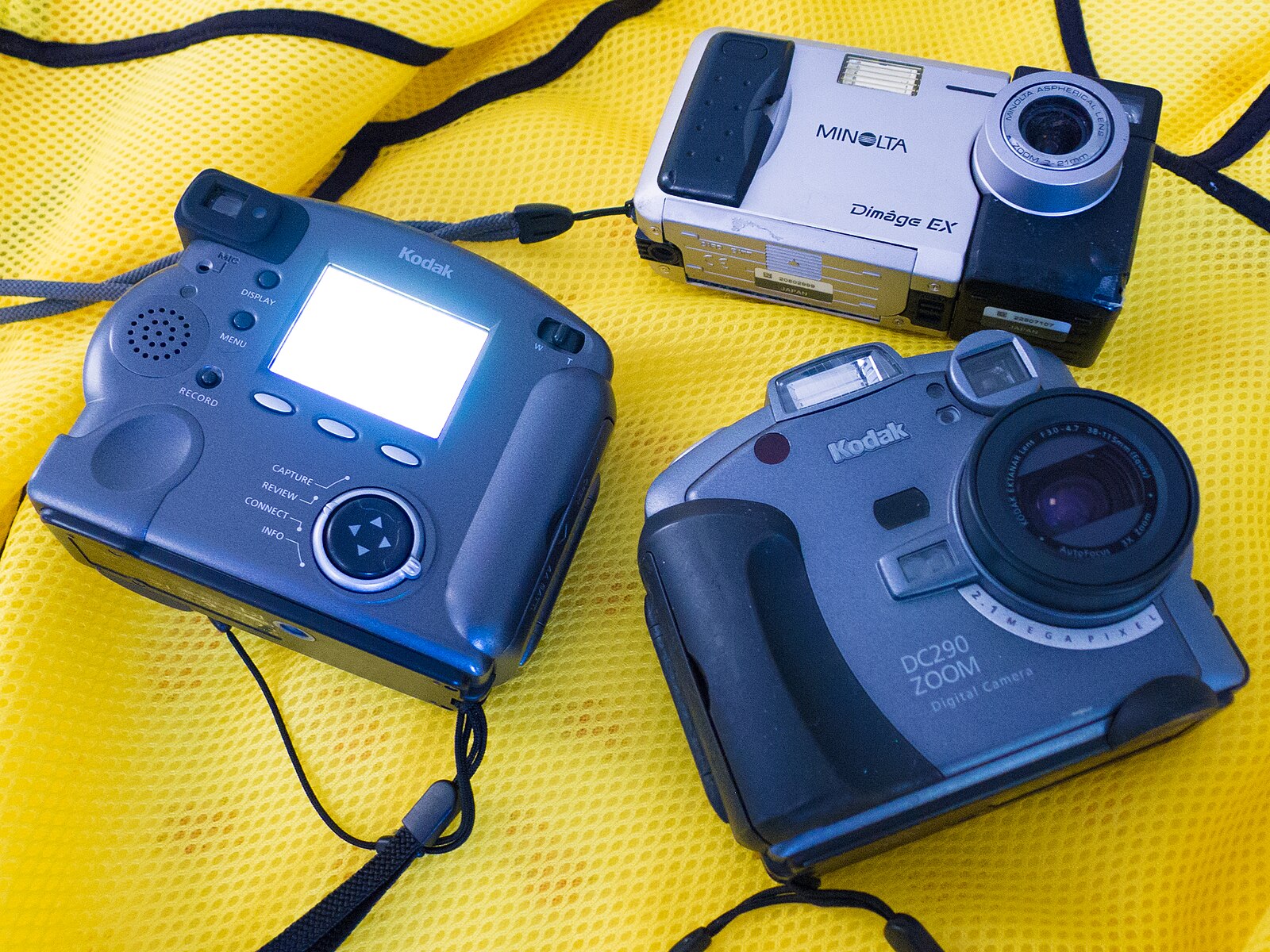
The 20th Anniversary of Digicams : A Revolution in Frames
When we look back to the year 2003, a historic moment in the history of digital photography, we also celebrate the 20th anniversary of digital cameras, or « digicams » as we affectionately call them. Since their arrival in the market, digicams have revolutionized the way we capture, share, and preserve our memories. In this article, we will explore the major milestones of this innovative technology.
1. 1980s – The Beginnings:
- The first digital cameras were introduced, but they were expensive, bulky, and limited in terms of features.
- They primarily targeted professional photographers and scientific applications.
2. 1994 – First Consumer Digicam:
- Apple launched the QuickTake 100, a consumer-oriented digital camera with a resolution of 0.3 megapixels.
- It stored images on a 1MB internal flash memory.
3. 1995 – Kodak DC40:
- Kodak’s DC40 was one of the first affordable digital cameras available to the public.
- It featured a 756 x 504 resolution, used CompactFlash cards, and cost approximately $800.
4. 1997 – Canon PowerShot:
- Canon’s PowerShot A5 became one of the first digital cameras to feature a CCD sensor.
- It had a 1.2-megapixel resolution and a 5MB CompactFlash card.
5. Late 1990s – The Megapixel Race:
- The race for higher megapixels began, with camera manufacturers competing to offer better image quality.
- Prices started to drop, making digicams more accessible to the general public.
6. Early 2000s – Introduction of Compact Designs:
- Companies like Sony and Nikon introduced compact digicams that could easily fit into a pocket.
- These cameras featured LCD screens for photo review.
7. 2004 – The Rise of Digital Single-Lens Reflex (DSLR) Cameras:
- DSLR cameras became popular among enthusiasts and professionals.
- They offered interchangeable lenses and superior image quality.
8. Late 2000s – The Advent of Mirrorless Cameras:
- Mirrorless cameras entered the market, offering DSLR-like performance in a smaller package.
- They started gaining popularity, especially among travel photographers.
9. 2010s – Smartphone Integration:
- Smartphones with high-quality cameras began to compete with traditional digicams.
- Many camera manufacturers incorporated advanced features and Wi-Fi connectivity to stay competitive.
10. 2020s – Innovation Continues:
- Today, digicams have evolved to include features like 4K video recording, impressive low-light capabilities, and advanced image stabilization.
- AI and machine learning have started to play a significant role in image enhancement.
The Impact of Digicams:
- Accessibility: Digicams made photography accessible to the masses by eliminating the recurring cost of film and development.
- Instant Gratification: Digicams brought instant gratification by allowing you to review and retake photos on the spot.
- Endless Storage: The capacity of memory cards allowed for capturing hundreds, or even thousands, of photos on a single card, with the option to swap it for more space.
- Creative Filters: Digicams offer built-in creative filters, enabling photographers to experiment with effects like sepia, black and white, and more, enhancing their artistic expression.
- Self-Portraits and Vlogs: Tilting LCD screens and front-facing cameras made it easier for people to take self-portraits and create vlogs, contributing to the rise of personal content creation.
The Evolution of Digicams:
- Image Sensors: Over the years, image sensors in digicams became significantly larger and more advanced, resulting in higher image quality and improved low-light performance.
- Zoom Capabilities: Early digicams had fixed lenses, but modern ones often feature impressive zoom capabilities, both optical and digital, catering to various photography needs.
- Wireless Connectivity: The inclusion of Wi-Fi and Bluetooth connectivity allowed for easy sharing of photos and remote camera control using smartphones and other devices.
- Video Recording: Many modern digicams are not limited to just photos. They offer high-quality video recording capabilities, some even in 4K resolution, turning them into versatile multimedia tools.
- AI and Machine Learning: Some digicams now employ AI and machine learning algorithms for image enhancement, object recognition, and better autofocus performance.
- Mirrorless and Compact Designs: Mirrorless cameras have become popular due to their interchangeable lenses and compact form factor. Compact digicams are also prized for their portability and ease of use.
- Sustainability: The move from film to digital photography reduced the environmental impact by eliminating the need for chemicals and reducing the production of physical prints.
As we continue to celebrate the 20th anniversary of digicams, it’s clear that these remarkable devices have reshaped the way we capture and share our lives. The journey from the early days of pixelated images to today’s advanced, feature-rich cameras has been nothing short of extraordinary. We can’t help but look forward to the next wave of innovations that will continue to redefine photography in the years to come.